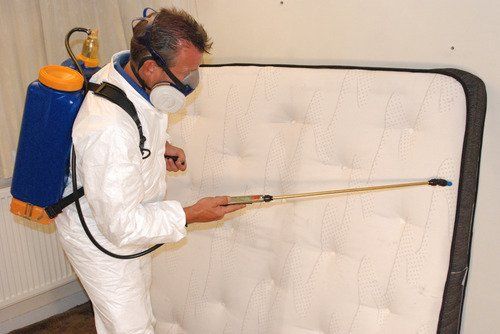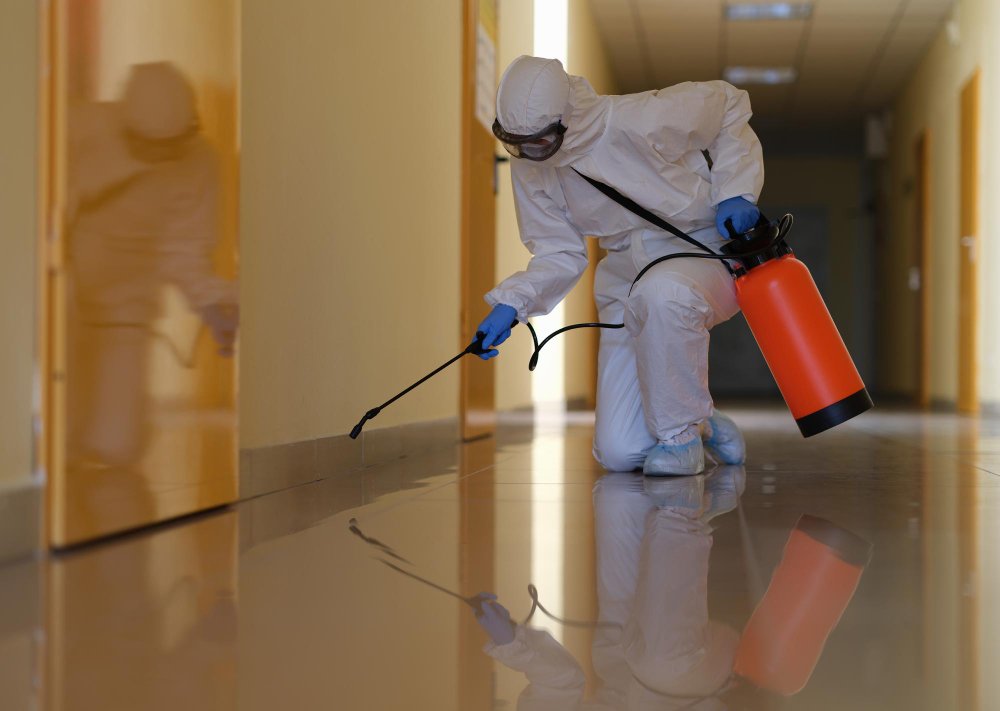How to Identify Bed Bug Bites and Prevent Future Infestations
How to Identify Bed Bug Bites and Prevent Future Infestations
Blog Article
Discover the Different Kinds of Insect and Their Therapy Options for Effective Monitoring
The administration of insects in both farming and household setups demands a detailed understanding of the various kinds that can invade these atmospheres, as well as the treatment alternatives offered for reliable control. From home rodents that position wellness risks to garden bugs that intimidate plant yields, each classification requires a tailored method. Understanding the subtleties of parasite habits and the corresponding remedies is critical; nevertheless, the question continues to be: what are the most efficient methods that not just resolve existing invasions however also avoid future incidents?

Typical Household Vermin
Although home bugs can differ significantly in type and habits, lots of share typical features that make them an annoyance. Typical family insects consist of rodents such as mice and rats, insects like roaches and ants, and occasional invaders such as spiders and flies. These bugs commonly thrive in settings that supply very easy accessibility to food, sanctuary, and water, making homes especially susceptible.
Rats, for instance, are infamous for triggering structural damages and spreading out disease. Bugs like roaches are not just troubling but can also cause allergic reactions and asthma in sensitive people.
Reliable bug administration begins with avoidance, which includes sealing entrance factors, maintaining cleanliness, and making use of suitable storage space techniques for food. Understanding the behaviors and characteristics of these typical household pests is important for effective administration and preserving a healthy and balanced living setting.
Garden Insects and Their Influence
Garden insects pose a considerable danger to the health and performance of plants, with some estimates recommending that they can cause as much as 40% of plant losses in particular areas. These insects, that include insects such as aphids, beetles, and caterpillars, as well as nematodes, can bring upon severe damage by eating plant cells, leading to stunted growth, minimized returns, and endangered quality.
The effect of garden bugs expands past simple aesthetic issues; they can interrupt environments by changing food web, influencing pollinators, and spreading conditions among plants. For instance, insects like the crawler mite can compromise plants, making them a lot more at risk to fungal infections. In addition, invasive types might outcompete indigenous plants, resulting in biodiversity loss.
Integrated Parasite Monitoring (IPM) practices, which integrate organic control, cultural methods, and targeted chemical applications, can provide lasting options. By recognizing the certain parasites and their habits, garden enthusiasts can execute targeted treatments that not only safeguard their plants but also promote a much healthier garden environment.
Rats: Recognition and Threats
Rodents are common yard pests that can present substantial threats to plant health and wellness and overall environment stability. These small mammals, including species such as computer mice, voles, and rats, are usually identified by their sharp incisor teeth see here now and robust bodies. Their fur coloration differs widely, ranging from gray to brownish, and they normally show a lengthy tail which aids in equilibrium and agility.
The dangers associated with rodent problems are multifaceted. Rodents are well-known for their function as vectors of different conditions, including hantavirus and leptospirosis, which can be transmitted to human beings and family pets.
In addition, rodents can interrupt the natural balance of regional ecological communities by taking on indigenous wildlife for resources. Their delving routines can cause soil disintegration and destabilization of plant origins. Early recognition and understanding of rodent habits and risks are important for effective pest monitoring.
Effective Therapy Techniques
When handling rodent problems, using effective treatment techniques is essential for lessening damages and health risks. A multi-faceted technique usually yields the finest results. Traps are an important component of rodent control. Snap catches and electronic traps give a humane and quick means to remove rodents, while glue traps can help keep track of activity degrees.
Second of all, lure terminals consisting of rodenticides can be strategically put in locations of high rodent activity. These stations need to be tamper-resistant to ensure the safety of non-target pets and youngsters. It is crucial to choose the suitable bait type, as rats can establish hop over to here lure hostility otherwise transformed regularly.
Along with catches and bait, securing entry factors can considerably lower the opportunities of re-infestation. This involves inspecting and fixing voids in windows, walls, and doors.
Last but not least, expert bug control solutions can be beneficial for substantial problems. They possess the experience, tools, and products necessary for efficient obliteration and can create a customized administration strategy. By executing these treatment techniques, homeowner can effectively resolve rodent problems and safeguard their health and home.
Preventative Actions and Tips

Keeping cleanliness is equally essential; make sure that food is kept in closed containers and quickly tidy up spills or crumbs. Consistently dealing with garbage and guaranteeing that compost heaps are taken care of properly can deter bugs from being drawn in to your home.
Additionally, take into consideration landscape design methods that dissuade rodent habitation. Trim greenery and keep mulch away from the structure of your home, as these can give concealing areas for pests.
Final Thought
Reliable bug monitoring necessitates an extensive understanding of various parasite kinds and their certain treatment alternatives. Eventually, a positive stance on bug management cultivates a much healthier environment, protecting both household and agricultural spaces from pest-related obstacles.
Typical household bugs include rodents such as rats and computer mice, insects like roaches and ants, and periodic invaders such as spiders and flies.Rodents are typical yard parasites that can pose considerable risks to plant health and wellness and total ecosystem stability. Early identification and understanding of rodent actions and risks are crucial for reliable parasite management.
Effective parasite management starts long before an invasion happens, with aggressive steps that can considerably minimize the likelihood of rodent entry and habitation.Effective parasite management requires a comprehensive pest removal understanding of different bug kinds and their certain treatment choices.
Report this page